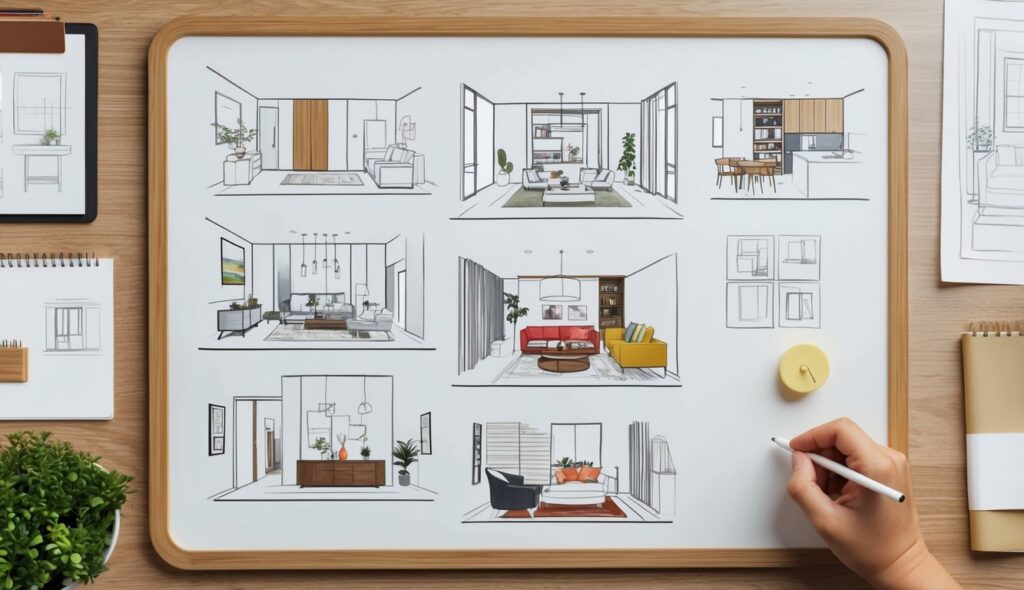When designing a modern space, the role of window blinds is often underappreciated. These seemingly simple additions can dramatically influence both the functionality and aesthetic appeal of a room.
Remember to repin your favorite images!
Window blinds serve to control light, provide privacy, and enhance energy efficiency—all while complementing the architectural integrity of the space.
Modern architecture thrives on clean lines and open spaces.
The right window blinds can accentuate these characteristics through innovation and technology.
Motorized and smart blinds offer an unparalleled level of convenience, allowing seamless control over a room’s ambiance with a mere tap or voice command.
This integration of technology meets the high demands of contemporary design and functionality.
Natural shades made from bamboo, wood, and other sustainable materials are increasingly popular. They provide a neutral backdrop that highlights modern design elements while contributing to an eco-friendly environment.
By combining traditional aesthetics with modern advancements, window blinds play a pivotal role in shaping the interior spaces of modern architecture.
Design and Aesthetics
Window blinds play a significant role in modern architecture, marrying function with aesthetic appeal.
Focus areas include materials, color schemes, and customization for modern living spaces.
Material and Texture Varieties
Different materials and textures of blinds can transform a room’s ambiance.
Wood, fabric, and metal offer unique characteristics.
Wooden blinds provide a warm, rustic feel, fitting for living rooms and bedrooms.
Fabrics, often used in Keego Zebra Blinds, offer both sheer and opaque options for varying light control.
Metal blinds, typically aluminum, add a sleek, modern touch, making them ideal for kitchens and offices.
The choice of material directly affects the overall style and functionality, balancing design elements with practical needs.
Color Schemes and Patterns
Color and pattern selections in blinds can define the mood of a space.
Neutral shades like beige and gray offer a modern, minimalist look and can make small spaces appear larger.
Bold colors can add a vibrant accent to a room.
Patterns, such as stripes or floral designs, can enhance specific interior design motifs.
For instance, blinds in roller shades can add texture without overwhelming the room’s aesthetic.
Using a harmonious color scheme that complements furniture and wall colors ensures a cohesive interior design.
Customization and Modern Living
Customization options for blinds cater to diverse architectural styles and personal preferences.
Made-to-measure blinds ensure a perfect fit for any window size and shape.
Motorized options offer convenience, especially in smart homes, allowing remote control of light and privacy settings.
Material choices, ranging from eco-friendly fabrics to advanced composites, enable architects to align with sustainable design principles.
Custom stains and finishes can match existing décor, seamlessly integrating blinds into the overall aesthetic of the home.
This flexibility supports tailored interior solutions, enhancing both the functionality and beauty of modern living spaces.
Functionality and Performance
Modern window blinds play a crucial role in enhancing the functionality and performance of buildings by providing light control, privacy, and energy efficiency. They also require consideration of maintenance and longevity factors.
Light Control and Privacy
Window blinds are essential for controlling natural light in a room.
By adjusting the slats, blinds can allow desired levels of sunlight, reducing glare and enhancing comfort.
This flexibility is especially useful in commercial buildings where varying lighting conditions are needed for different tasks.
Blinds also offer valuable privacy without sacrificing natural light.
For example, Keego Blinds offer cordless options which can be easily adjusted for privacy while still letting in ambient light.
These features make them indispensable in both residential and commercial settings.
Energy Efficiency and Insulation
Exterior technical blinds can greatly improve a building’s energy efficiency.
They reduce heat gain during summer and provide insulation during winter.
Studies show that exterior technical blinds compensate for some of the deficiencies in building façades, thereby reducing the need for extra cooling and heating systems.
Automated blind systems further enhance energy efficiency by adjusting blinds based on real-time sunlight and temperature conditions.
For instance, motorized blinds offer seamless operation, improving both performance and ease of use.
Maintenance and Longevity
The materials and design of window blinds affect their maintenance and longevity.
High-quality materials like aluminum and treated fabrics resist wear and tear, making them suitable for long-term use in high-traffic areas.
Regular cleaning and timely repairs extend their lifespan.
Products like Keego Blinds offer durable and low-maintenance solutions.
Their innovative designs ensure that they remain functional with minimal upkeep, providing excellent value over time.
Maintenance considerations also influence budget decisions, particularly for larger projects involving multiple windows.

